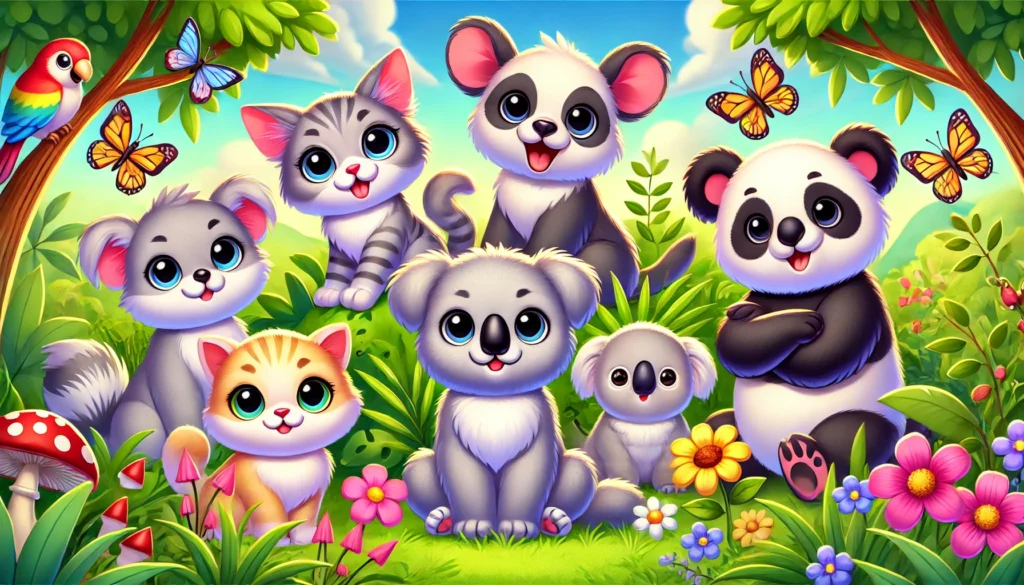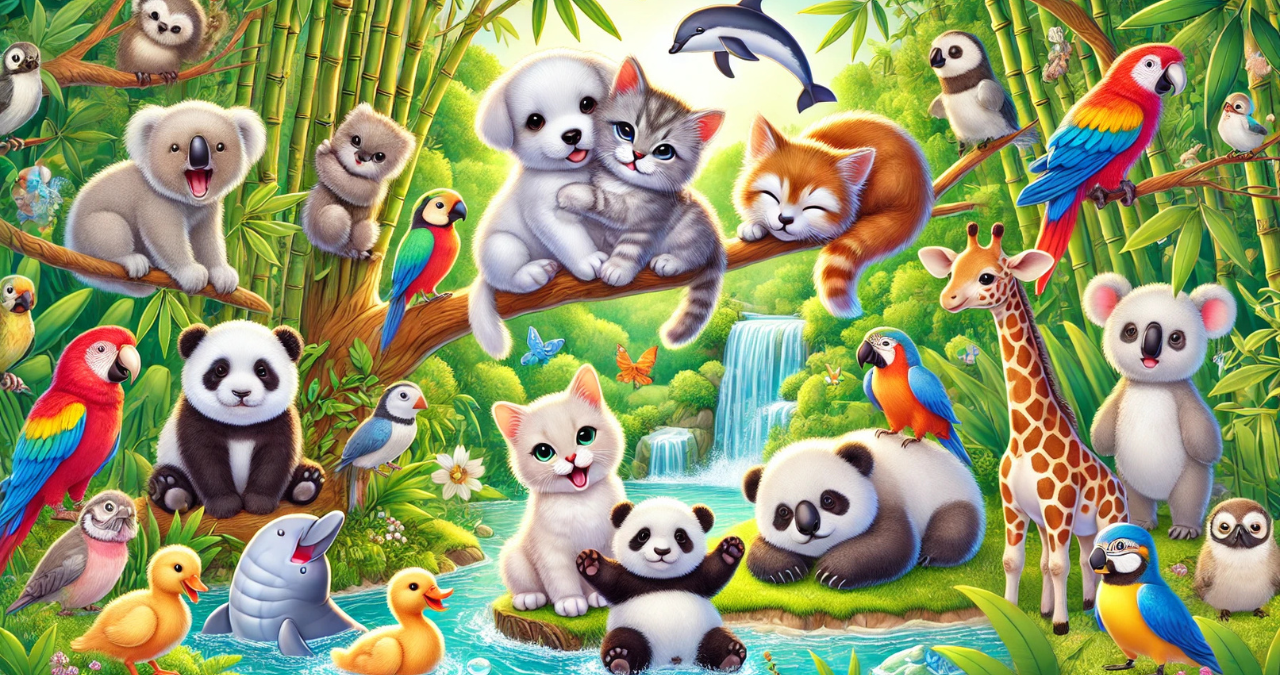Introduction
The allure of cute animals is undeniable. From the wide-eyed wonder of a bushy-tailed squirrel to the clumsy, playful antics of a Labrador puppy, certain Cute Animals possess an almost magical ability to capture our hearts and smiles. But what explains our universal attraction to these adorable creatures? Research suggests that it stems from evolutionary traits associated with nurturing and caring for the young. This guide delves into the psychological and biological reasons behind the charm of cute animals, exploring how these features affect our behavior and emotions and why understanding this phenomenon is crucial for both personal well-being and conservation efforts.
Cuteness is not just a simple delight; it plays a significant role in human psychology. Characteristics like big eyes, small noses, and fluffy bodies trigger a caregiving response in humans, likely a trait developed to ensure the survival of our own young. By extending this response to animals with similar characteristics, we foster a bond that transcends species, highlighting the deep connections humans can feel toward nature. As we explore these connections, we also look at the broader implications of our love for cute animals, including how it can be harnessed to support conservation efforts and promote animal welfare.
The Science of Cuteness
Cuteness is a powerful biological and psychological phenomenon that can elicit strong emotional responses in humans. Scientifically, features such as large eyes relative to the head, rounded face shapes, small noses, and pudgy bodies are universally perceived as cute. These traits mimic the physical characteristics of human babies, evoking a protective and caring instinct from adults. This is often called the “baby schema” effect, a term coined by ethologist Konrad Lorenz. Studies show that viewing animals with these features can trigger the brain’s reward system, releasing dopamine, which makes us feel happier and more content.
The impact of cuteness extends beyond just feeling good. It has been proven to influence human behavior, encouraging gentleness, patience, and altruism. In therapeutic settings, interactions with cute animals can significantly reduce stress and anxiety levels. For example, programs incorporating therapy dogs in hospitals and nursing homes have noted improved patient mood and decreased stress indicators. By understanding the science of cuteness, we can better appreciate why cute animal videos are so popular on social media and how these interactions, even virtual, can positively affect our mental health.
Iconic Cute Animals Around the World
Across the globe, various animals have become iconic symbols of cuteness, captivating different cultures and societies with their endearing qualities. In the mammal category, puppies and kittens dominate due to their playful behaviors, innocent expressions, and tactile fur, called human interaction. Similarly, pandas and koalas are beloved worldwide, with their gentle natures and cuddly appearances, often becoming the faces of international wildlife conservation campaigns.
In the avian world, baby chicks and ducklings are celebrated for their fluffy feathers and comical waddling, epitomizing vulnerability and the need for protection. Meanwhile, colorful and lively parakeets are cherished pets that bring vibrancy and music to their human companions. In marine environments, dolphins are famed for their intelligence and friendly demeanors, while seal pups, with their big, round eyes, draw empathy and support for aquatic life protection. Even among insects, creatures like ladybugs and fuzzy caterpillars are favored for their bright colors and harmless nature, illustrating that cuteness is a diverse and universal attribute across animal species.
Benefits of Interacting with Cute Animals

Interacting with cute animals offers many emotional, psychological, and social benefits. Emotionally, an adorable animal’s presence can elevate serotonin and dopamine levels associated with happiness and pleasure. Psychologically, pets, especially those with cute characteristics, can provide comfort and reduce feelings of loneliness and depression. Socially, animals often bring people together, whether through pet meet-ups or simply attracting attention in public spaces, helping to strengthen community ties and enhance social interaction.
Physically, the benefits are equally impressive. For instance, walking a dog improves physical fitness and increases social interaction and outdoor activities. Studies have shown that pet owners tend to have lower blood pressure and reduced cholesterol levels, likely due to the calming presence and increased physical activity pets require. Furthermore, in educational and therapeutic settings, animals like rabbits and guinea pigs have been used to help teach children empathy and responsibility, showcasing the multifaceted advantages of interacting with cute animals.
Threats to Cute Animals and Conservation Efforts
Despite their widespread adoration, many cute animals face significant threats due to habitat destruction, climate change, and illegal wildlife trade. For instance, deforestation in Australia threatens the natural habitats of koalas, while the melting Arctic ice reduces polar bear hunting grounds. Conservation efforts are vital to ensure that these animals do not become mere memories. Initiatives like breeding programs for pandas in China and koala preservation projects in Australia have shown success, helping stabilize and even increasing populations.
However, conservation is not just about preventing extinction; it’s about creating a sustainable coexistence that respects and protects natural habitats. This includes supporting policies that protect critical habitats, participating in or donating to wildlife conservation organizations, and staying informed about environmental issues that affect these animals. By taking active steps to help, we can ensure that future generations will also be able to enjoy and benefit from the world’s cute animal species.
Conclusion
The fascination with cute animals is more than an emotional indulgence; it has profound implications for how we interact with the natural world. Understanding the science behind cuteness can help us appreciate these animals’ psychological and physical benefits and highlight the importance of their conservation. As we navigate a changing environment, fostering a deeper connection with nature through our love for these creatures can be a key component of global conservation strategies.
FAQs
- What makes an animal “cute,” according to science?
- Scientifically, animals are considered cute when they exhibit features such as large eyes, small noses, and round faces similar to those of human babies. This triggers a nurturing response from humans, known as the “baby schema” effect.
- Which are the cutest animals in the world, and why?
- Puppies, kittens, pandas, and koalas are commonly recognized as cute animals. Their appeal lies in their playful behaviors, innocent looks, and physical features that elicit human care and affection.
- How does interacting with cute animals affect human health?
- Interacting with cute animals has been shown to reduce stress, decrease feelings of loneliness, and trigger the release of dopamine, a neurotransmitter associated with pleasure and satisfaction.
- What are some simple ways to contribute to the conservation of cute animals?
- Supporting wildlife conservation organizations, adopting sustainable practices that reduce environmental impact, and spreading awareness about the plight of endangered species are effective ways to contribute.
- Can watching videos of cute animals have similar benefits to interacting with them in person?
- Studies suggest that even watching videos of cute animals can boost mood, reduce anxiety, and improve overall emotional well-being due to dopamine release.
You May Also Read: https://timebusinesswork.com/asmodeus-5e/

Leave a Reply